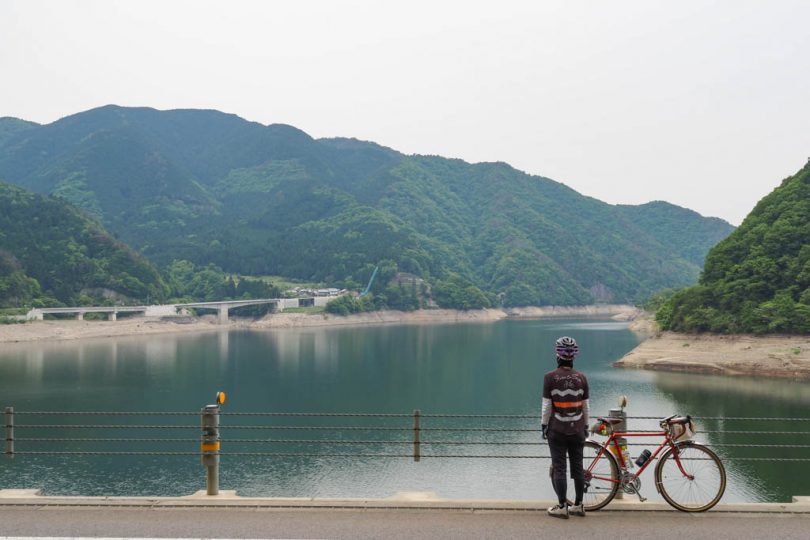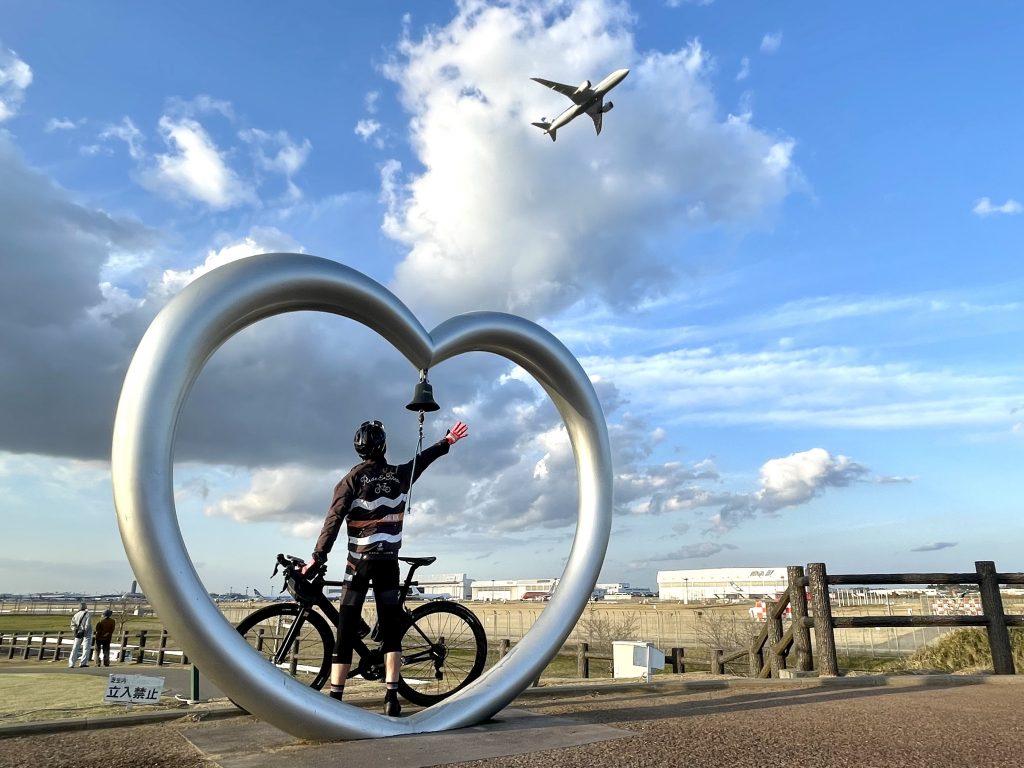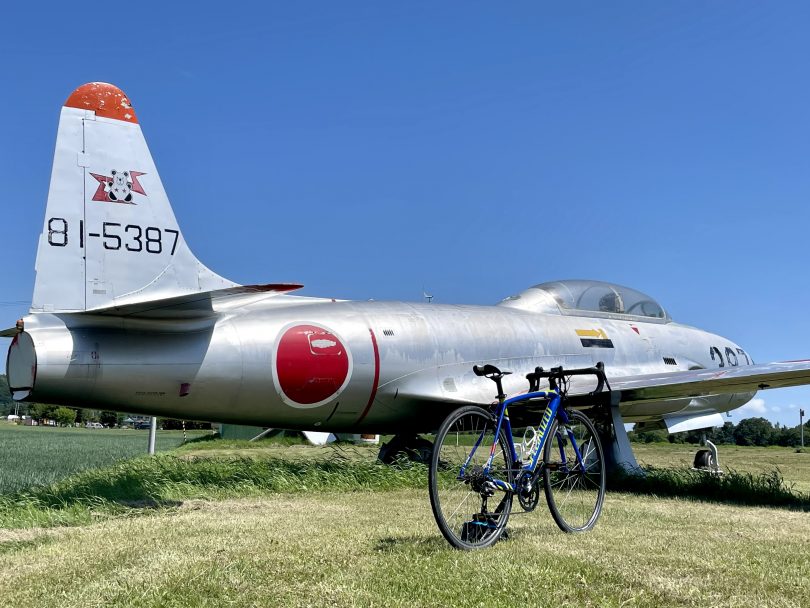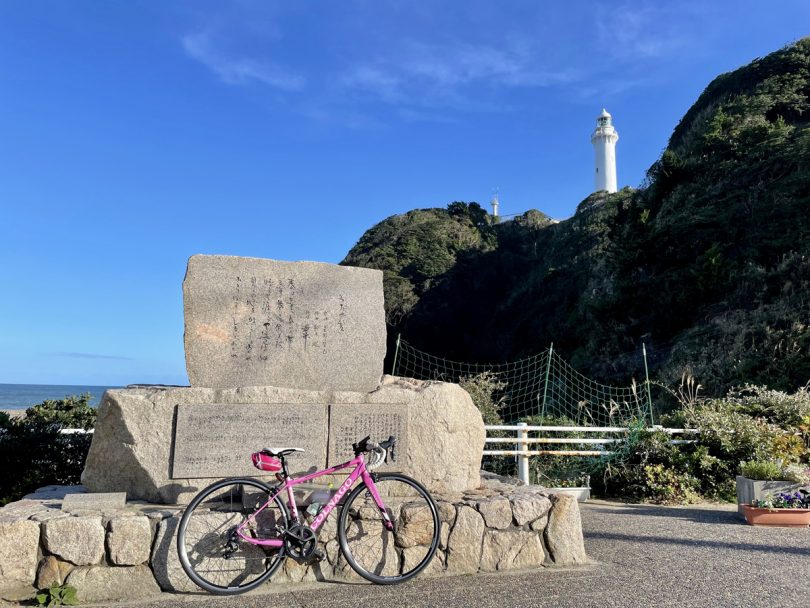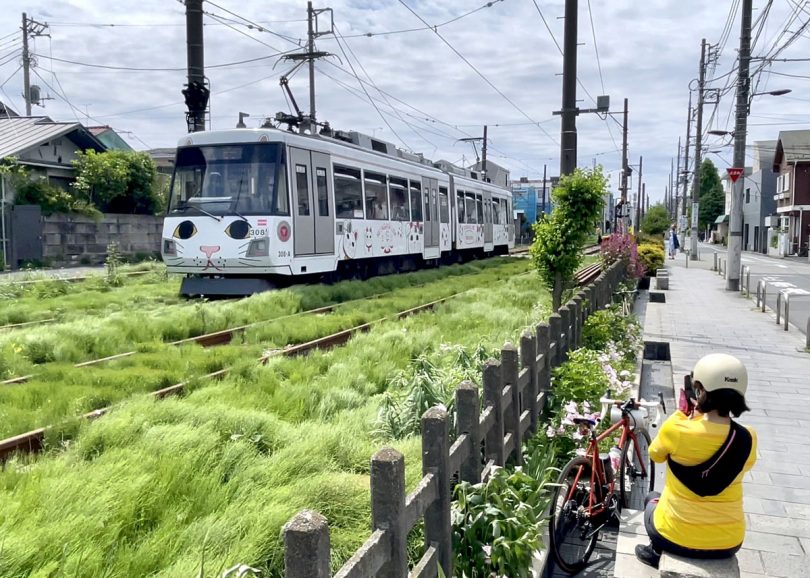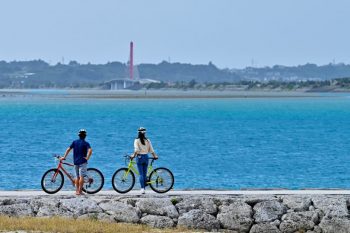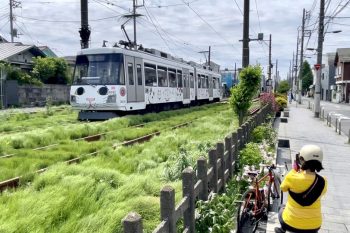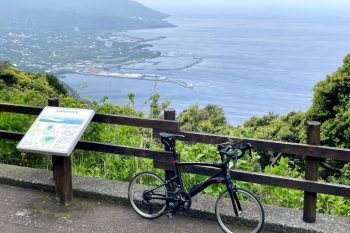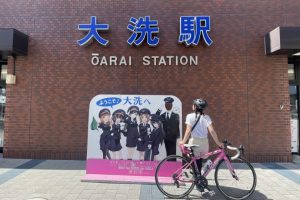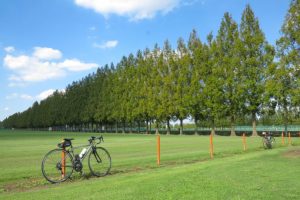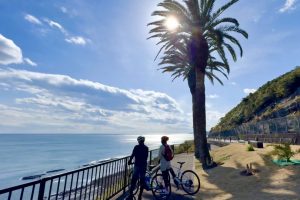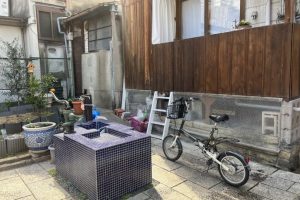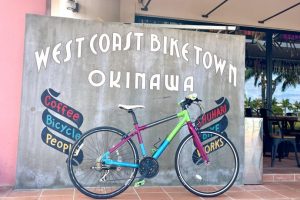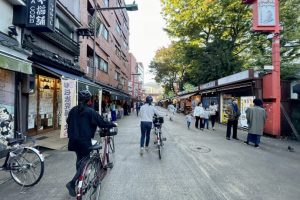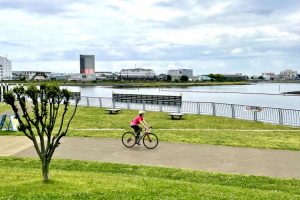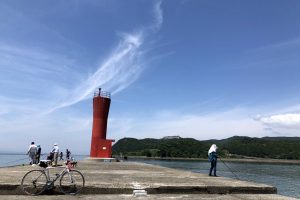This course includes viewing higanbana (cluster amaryllis) flowers, which are at their best from mid to late September, and riding the cable car to pay a visit to Oyama Afuri Shrine. The walking time is a little long, so it is recommended to wear comfortable walking shoes.
Contents
- Start from Hon-Atsugi Station
- Nanasawa Onsen, a hidden hot spring near Tokyo
- Ride along Yakushi Line of the forest road
- A side trip to Hinata Yakushi Hojobo
- Johotsuganji Temple and Higanbana no Sato
- Road to Oyama Afuri Shrine
- Pilgrimage to Mt. Oyama by cable car
- Praying at the lower shrine of Oyama Afuri Shrine
- Cycling through the countryside to Hon-Atsugi Station
- Course Introduction
- Summary
Start from Hon-Atsugi Station
Hon-Atsugi Station on the Odakyu Railway Odawara Line is a large station directly connected to the station building, Myload.
After exiting the station, drive through the downtown area for a while, so be careful of cars.
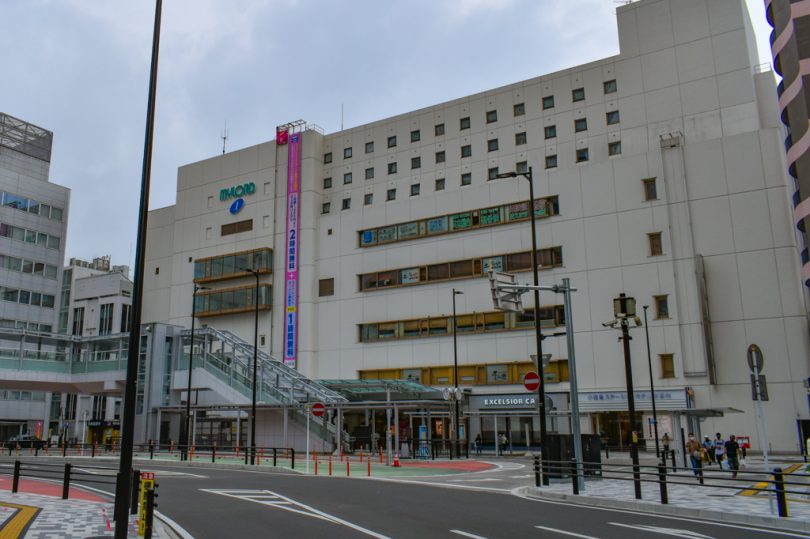
After a short ride, you will enter a road along Tamagawa River. The road along the river is comfortable as there are not so many cars.
On the way to Akasaka Bridge, you will find a stone statue of “Ayu-koro-chan,” a cute character of Atsugi City.
The motif of the character is “ayu” (sweetfish) and “Atsugi-horumon” (offal), which are the specialty of Atsugi.
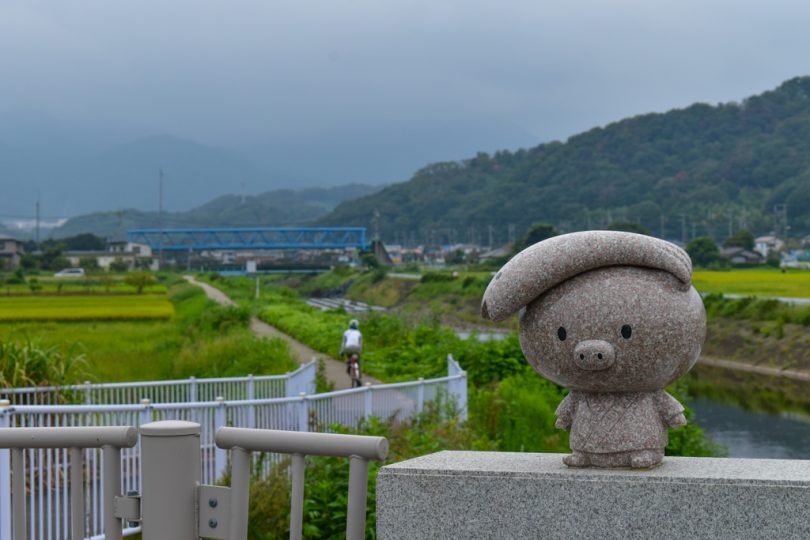
The bustle in front of the station seems to have faded away as you cycle along Tamagawa River, where the satoyama (countryside) scenery spreads out, and turn right toward Nanasawa Forest Park. Be careful on Prefectural Route64 as more and more cars for sightseeing will be coming in.
After passing a 7-Eleven convenience store, you will see a sign for “Nanazawa Onsen-kyo” (hot spring village). From there you will enter the hot spring village and enjoy the atmosphere of the hot spring town as you go deeper into the village.
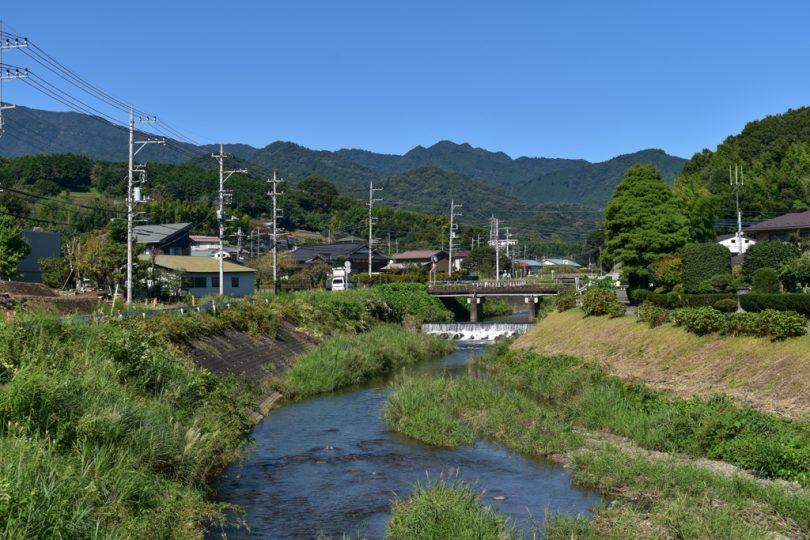
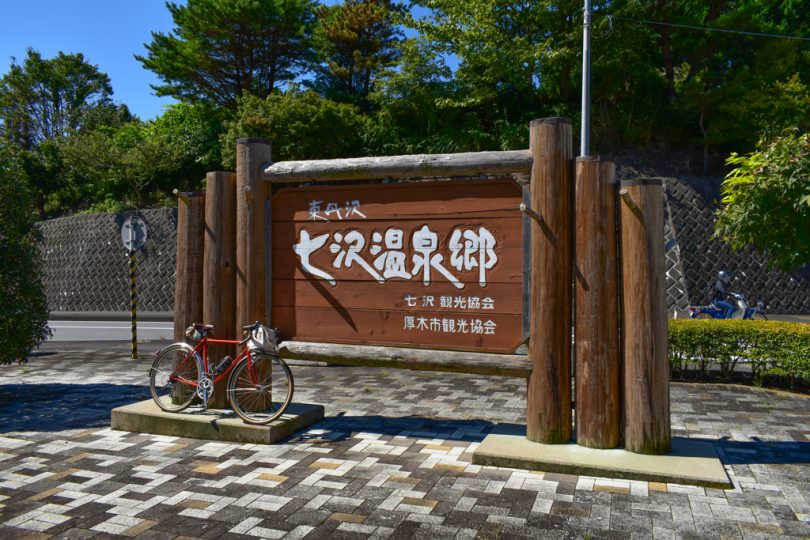
Nanasawa Onsen was established in the Edo period (1603-1867), and inns were opened one after another in the area.
Today, there are six ryokan (Japanese-style inns) and day-trip bathing is available, so many people from Tokyo visit the area while climbing a mountain or just for a drive. If you come here by car, it is a good idea to take a hot spring bath here on the way back to work up a sweat.
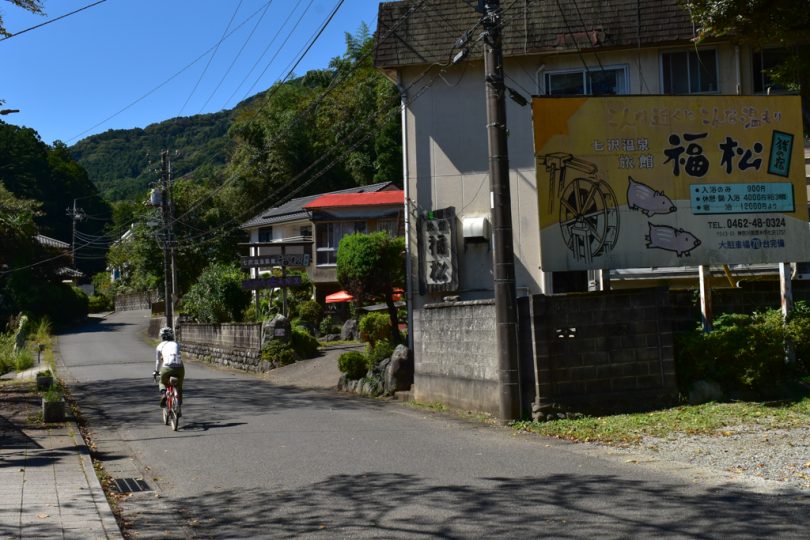
Kannon Temple, visited by bird lovers
After passing Nanasawa Onsen, you will come to a narrow slope leading to Kannonji Temple.
The temple is famous for its animal memorial service, as it is said that the beloved horse of Sadamasa Uesugi, the lord of Nanasawa Castle, was buried here.
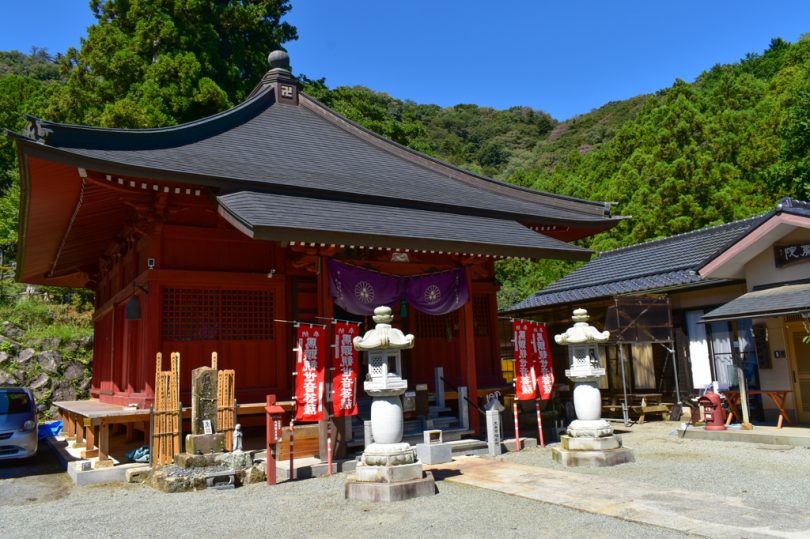
You will be surprised to see free-range chickens and silkie chickens wandering around the temple grounds.
There is a wide selection of red ink stamp book and pet good luck charms with bird motifs, and you will find yourself wanting a variety of them.
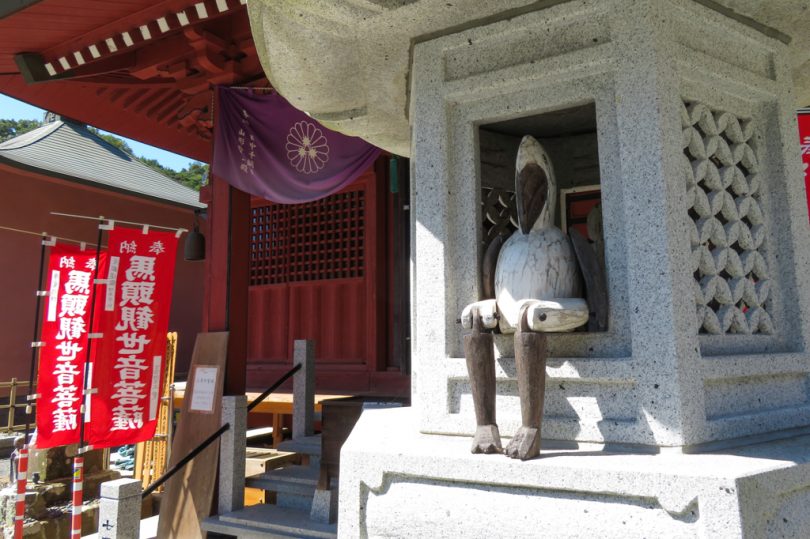
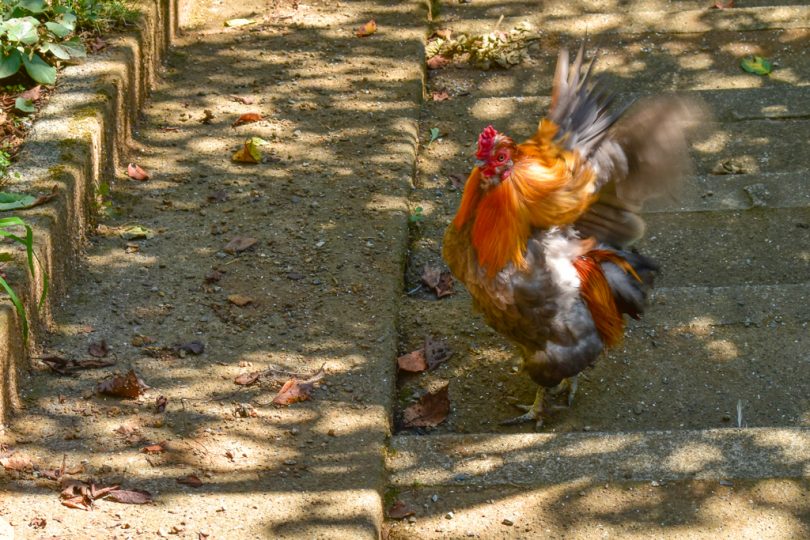
Ride along Yakushi Line of the forest road
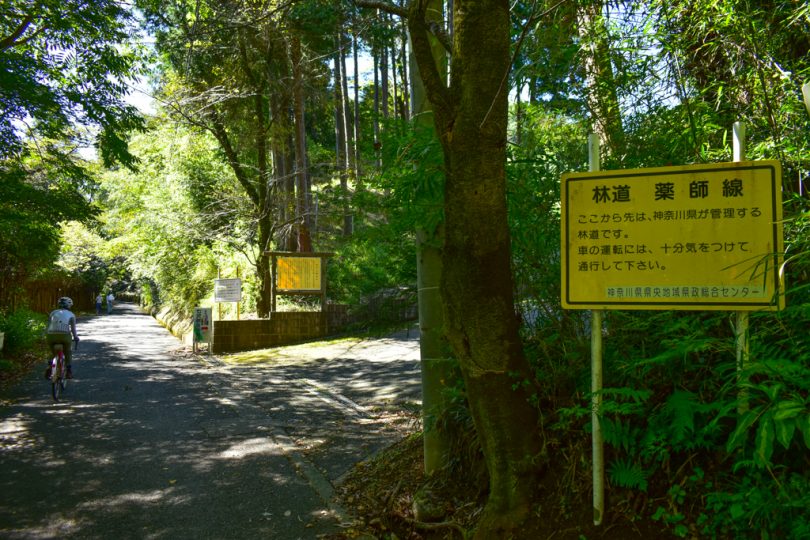
After leaving the temple, you will enter Yakushi Line forest road.
Although motorcycles and bicycles are generally prohibited on forest roads in Kanagawa Prefecture, Yakushi Line is a recommended cycling course by Atsugi City, so it is passable!
Please check the road information before you go along the forest road.
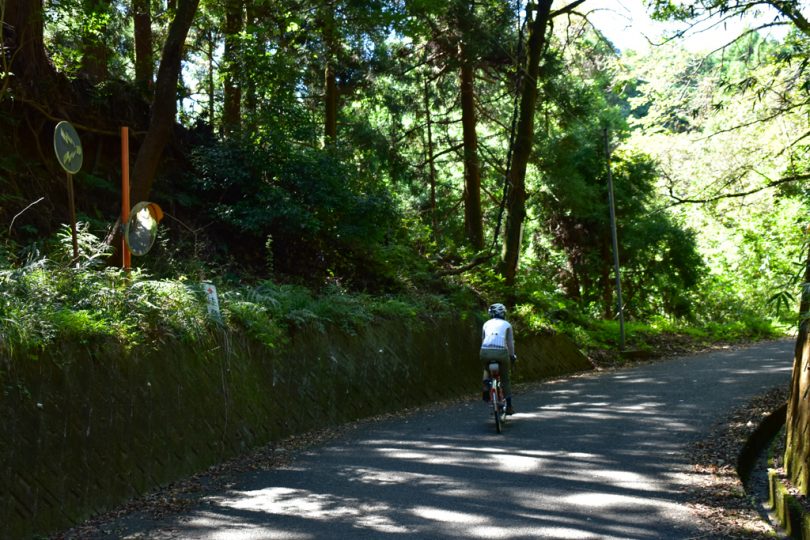
Turtle Stone and Nanasawa Observatory
As soon as you enter Yakushi Line of the forest road, you will see a sign for “Turtle Stone”. If you look up into the woods from the entrance of Hinata Yakushi Hiking Trail, you will see a large rock, so it is a short walk to it.
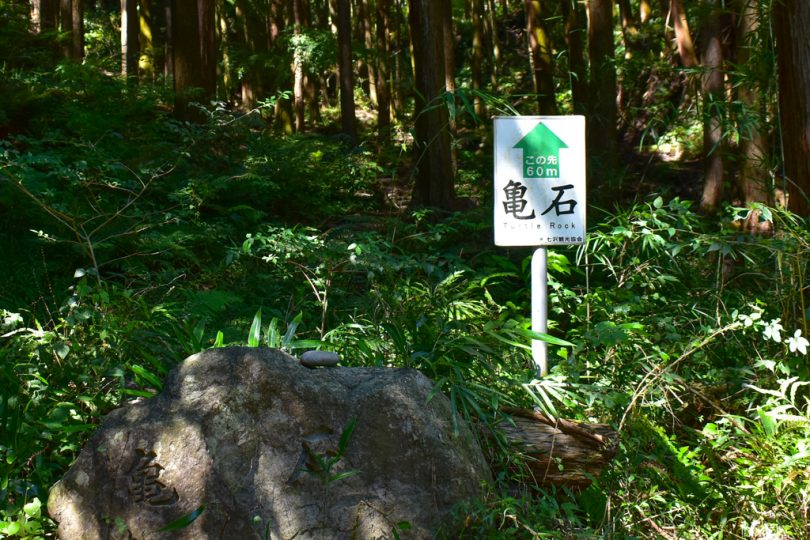
Why is a large rock, about 4m high and 10m wide, here? You will wonder why it is here.
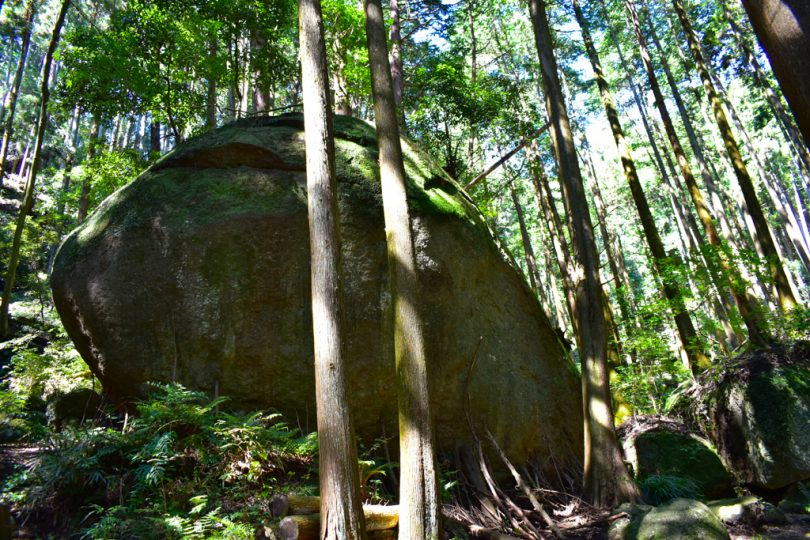
There is also “Nanasawa Observatory” near the turtle stone.
Once you climb up to the observatory, the view opens up and you can see the whole city of Atsugi City and Isehara City, which is quite an impressive sight.
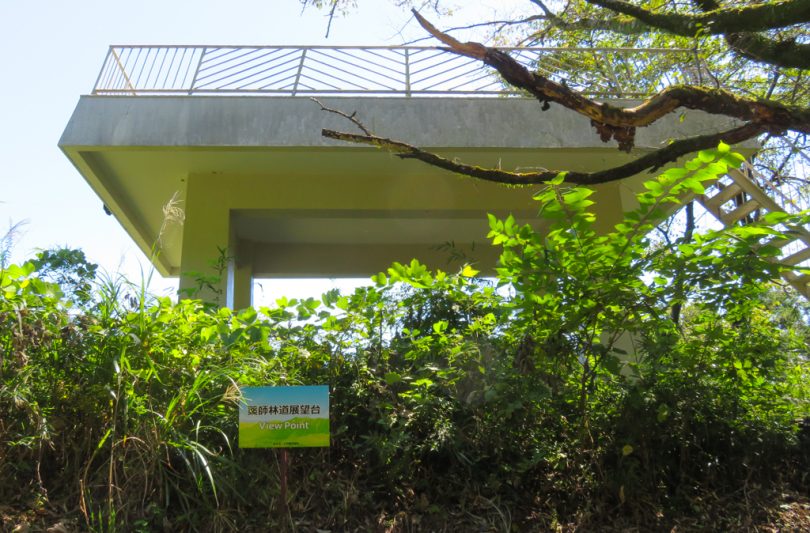
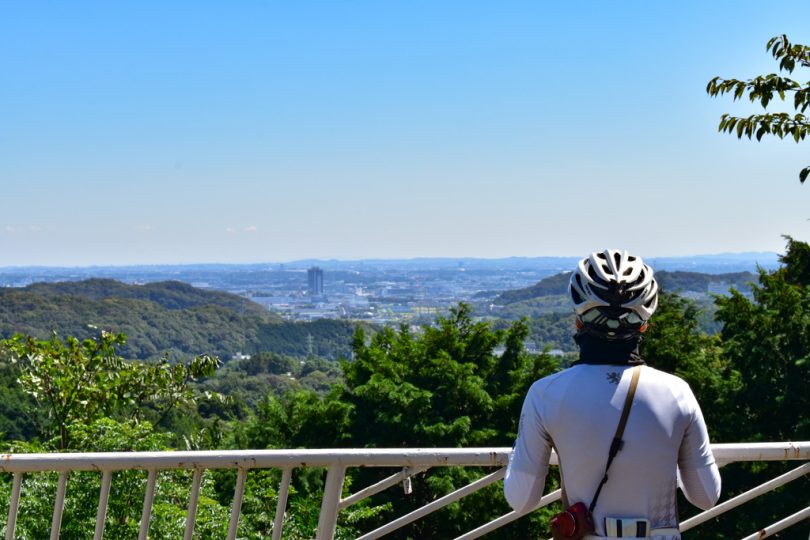
The slope is not too steep, so it is a comfortable forest road.
On the way, enjoy the view that opens up through the trees as you ride along.
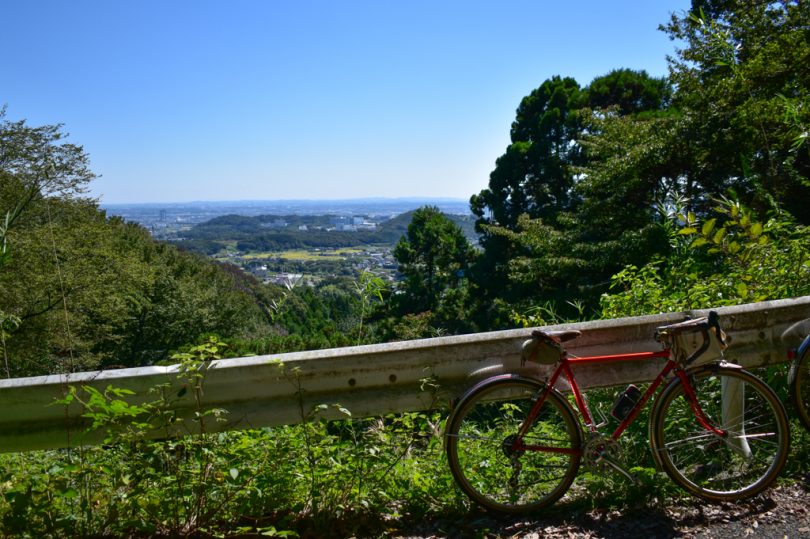
A side trip to Hinata Yakushi Hojobo
After descending a little from the peak of the forest road, we came to the parking lot of Hinata Yakushi Houjobo.
Park your bicycle by the side of the parking lot and head toward the main hall.
I came here without knowing it, but the main hall is a sight to behold. I thought that the thatched roof of the main hall was very beautiful…but it seems that the thatch was renewed for the first time in 270 years as part of the “Heisei no Daishuri” (major repairs in the Heisei Era), which started in 2010 and lasted about seven years.
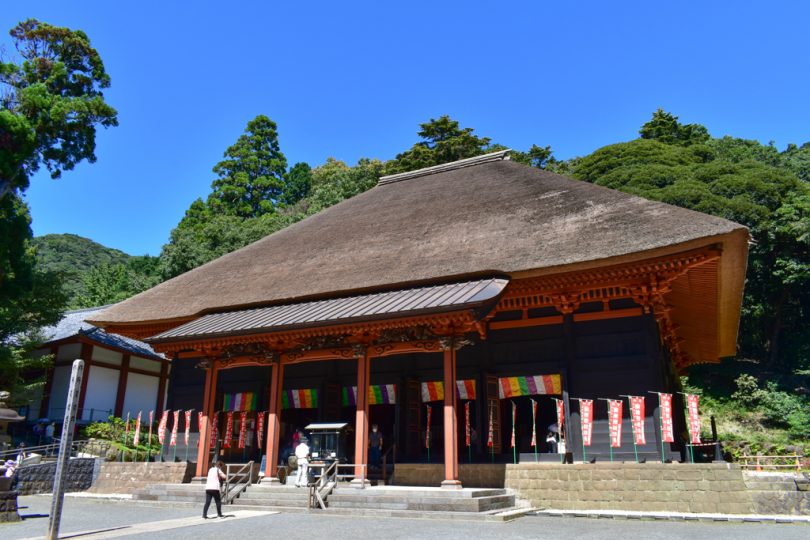
One of the three major Yakushi (Medicine Temples) in Japan, the temple originated in the Nara period (710-794).
In the Kamakura period, Minamoto no Yoritomo and Hojo Masako also visited the temple. You can feel the history of the temple.
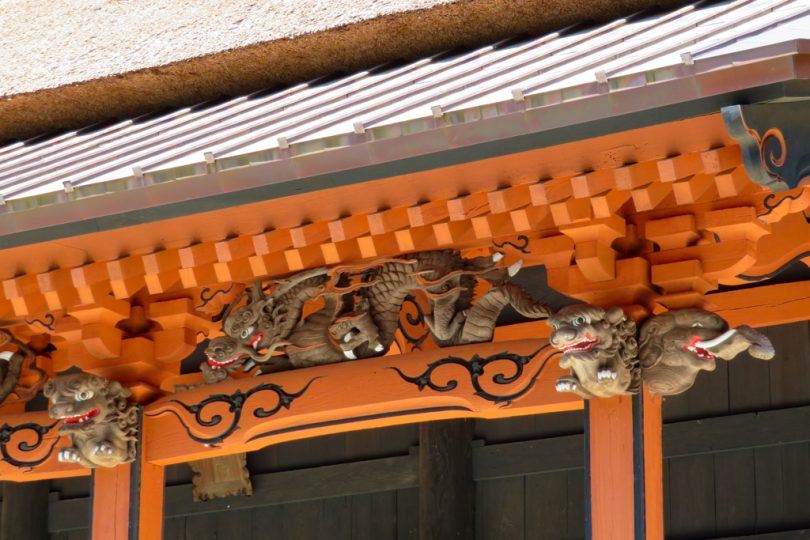
Johotsuganji Temple and Higanbana no Sato
After descending the forest road, you will come to a junction. In front of it is “Higanbana no Sato” area.
You may want to take a walk in the village where higanbana flowers are in bloom, but first, turn right and head for Johotsuganji Temple.
A little further up the riverside path, you will be surprised to see a three-story pagoda.
Johotsuganji was so prosperous in the Edo period (1603-1867) that the entire mountain was the domain of the temple, but it is said that the temple declined after the Meiji period (1868-1912).
A typhoon in 1938 caused a landslide, and the temple was relocated to its current location about 1km in front of the temple. The old location is called “Okuno-in,” and there are information signs at the gate and the place where the main hall used to be, so those who are interested may want to visit there.
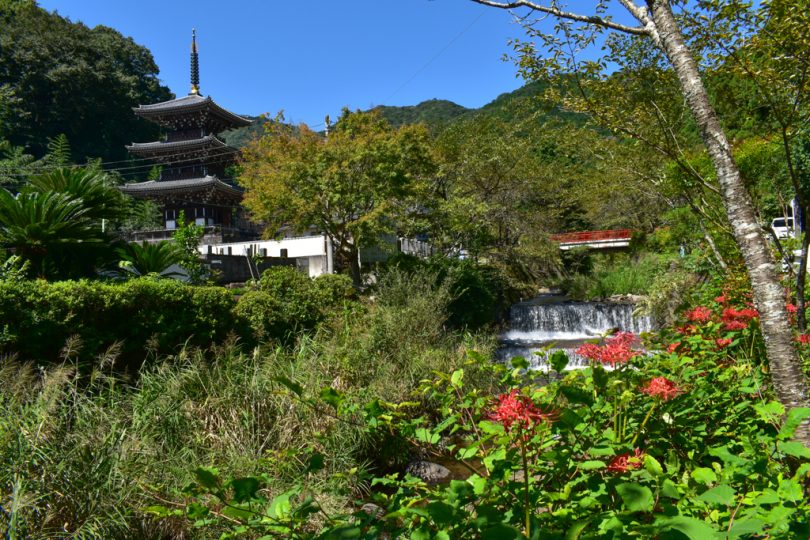
The three-story pagoda was built in 2000, so it is surprisingly new. Still, looking up close, one can appreciate the beauty of the intricate temple architecture.
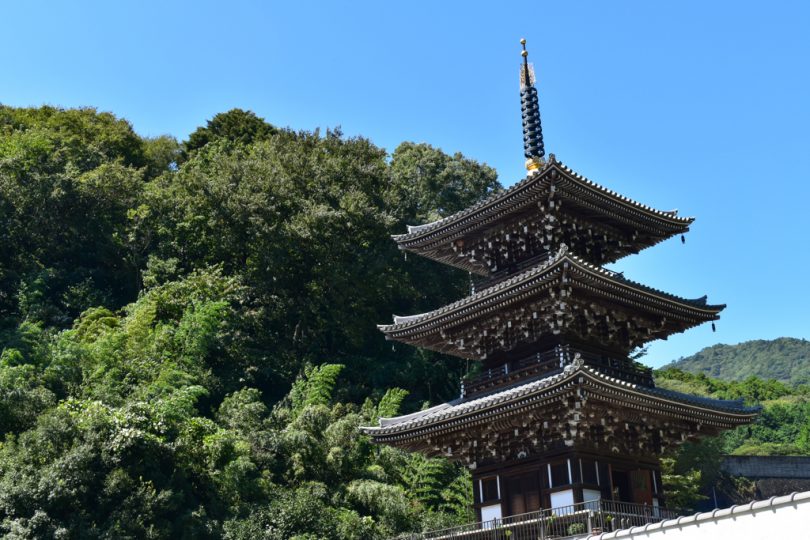
Strolling in Higanbana no Sato
Returning the way we came, we will go back to “Higanbana no Sato” (Higanbana Village).
Hinata area, where higanbana blooms, is one of the “100 Best Places for Flowers in Kanagawa” and offers a delightful autumn view of the satoyama every year.
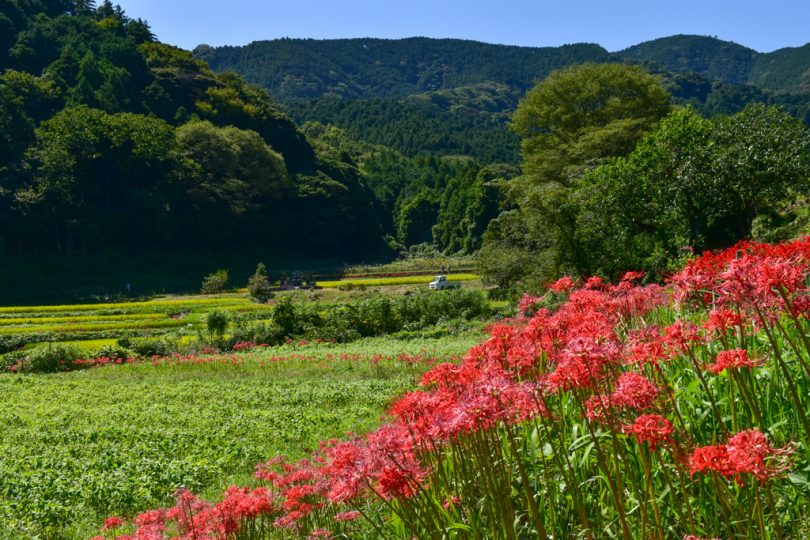
Park your bicycle aside and walk along the walking path.
The route is set so that you walk along the footpath between rice paddies. The scenery of dried rice straw and higanbana blooms gives you a sense of traditional satoyama scenery.
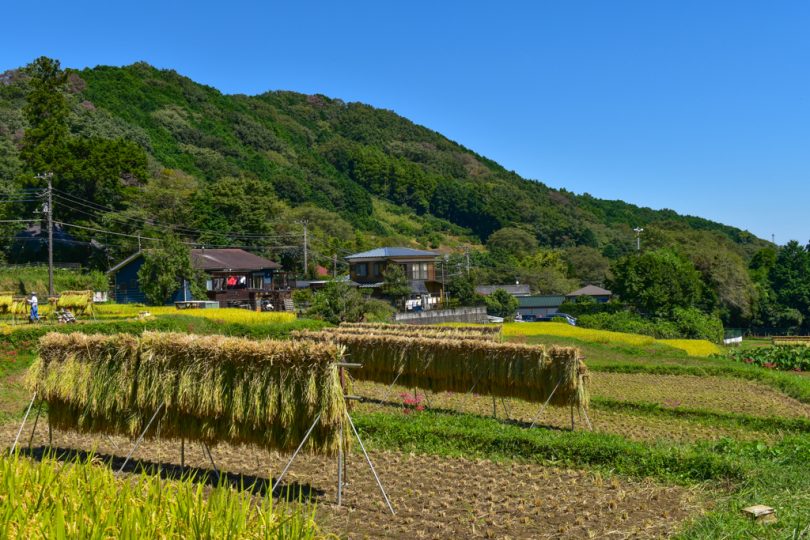

Even if you ride a bicycle through Hinata area, you can usually find higanbana blooming along roadsides and hedges.
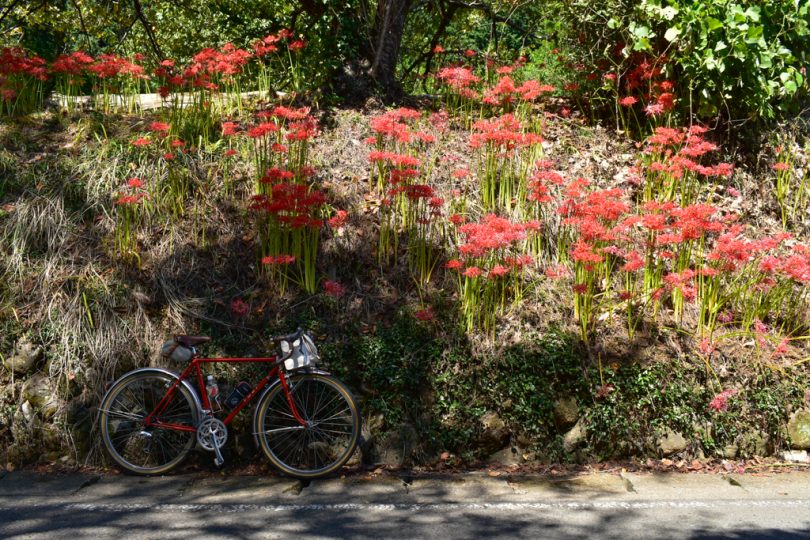
Road to Oyama Afuri Shrine
From Hinata area, connect the prefectural road and take the old Oyama Kaido road to Oyama Afuri Shrine.
There were several unmanned stores along the side of the road selling vegetables and seasonal chestnuts. I bought a bag of large, glossy chestnuts that looked delicious and put them in the front bag of my lander. 100yen per bag is inexpensive to buy local food!
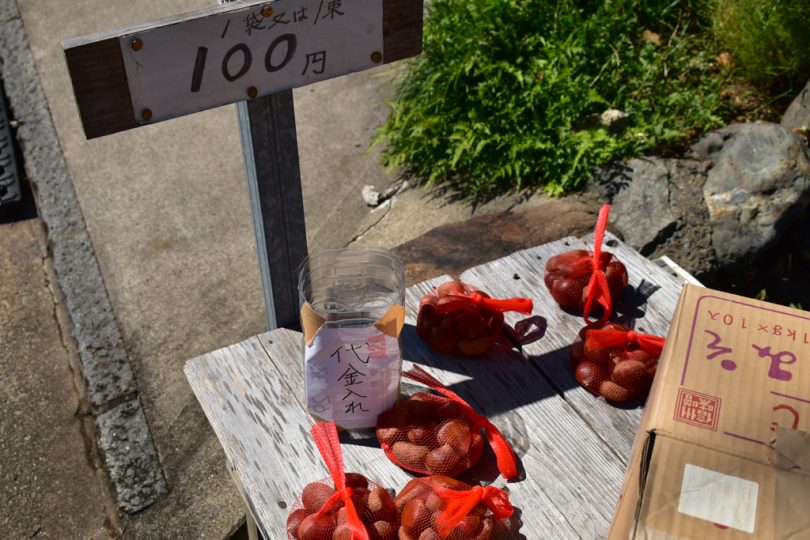
After passing through the big three large torii gates (made of copper), we could feel that we were getting closer to the shrine as more and more lodgings were. Beyond the torii gate, you can see Mt.Oyama.
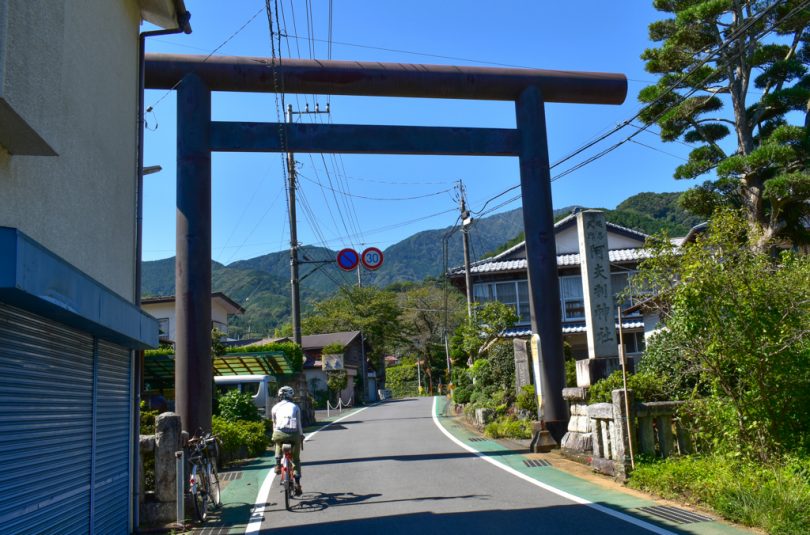
Lunch at Oyama Tofu Restaurant
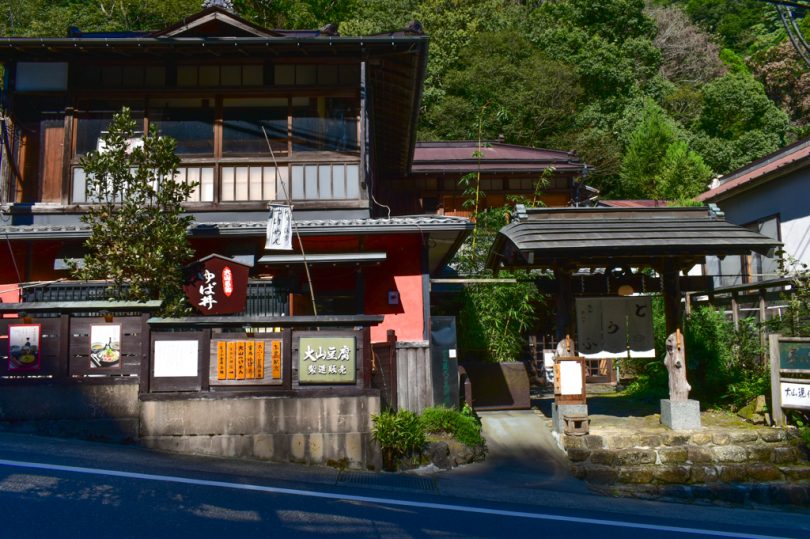
▲The photo clearly shows the steep slope in front of the restaurant.
On Prefectural Route611, which has a steep slope leading up to the shrine, there is a row of stores selling the famous Oyama Tofu.
When I was wondering where to have lunch, I was curious about “Mushintei,” which has the feel of a long-established ryokan (Japanese inn), and entered the restaurant, which is a modern space with a restaurant on the first floor and Oyama Museum of Contemporary Art on the second floor.
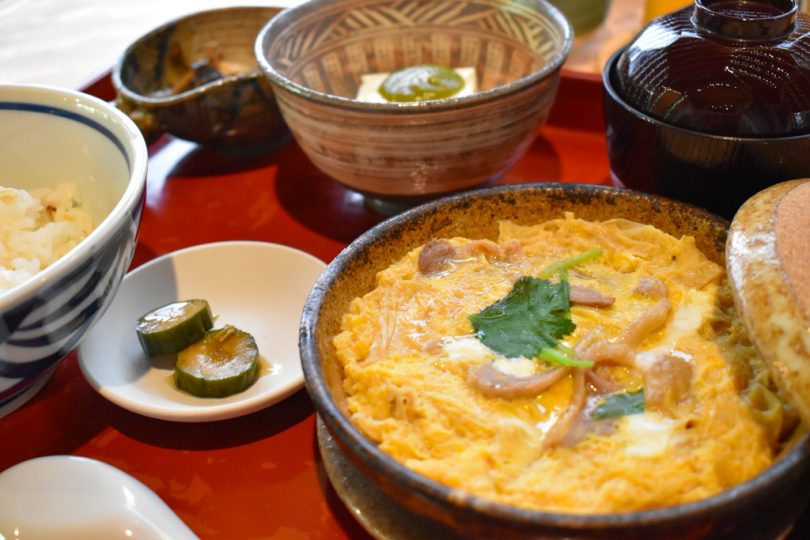
I ordered “Oyama Tsukemen Set” and “Yuba Donburi Set” from the lunch menu.
Tsukemen (dipping noodle) in a tofu restaurant? I was surprised, but the chicken char siu pork and yuba were excellent.
The popular yuba donburi (yuba bowl with yuba and Afuri gamecock) with egg was also delicious with a gentle taste.
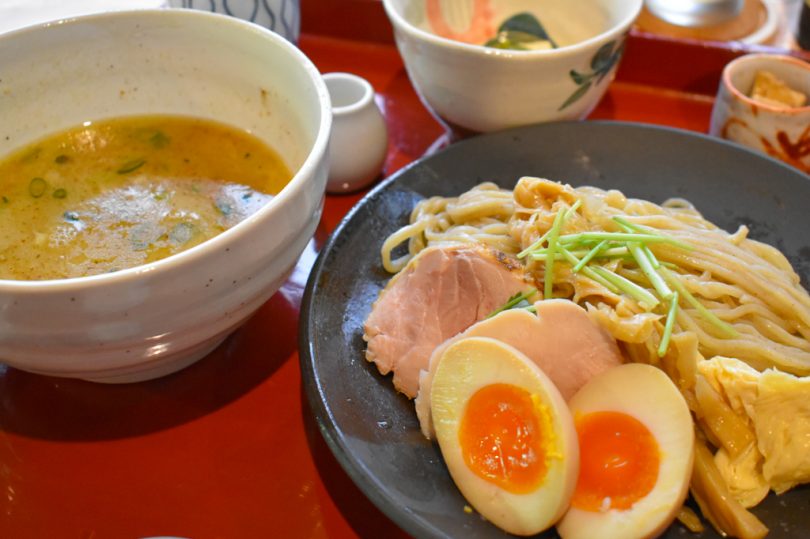
Pilgrimage to Mt. Oyama by cable car
Prefectural Route611 before the entrance to the approach to the mountain is a straight, steep slope. It is really steep and hard. I managed to get up the hill with a bit of a wobble.
At the end of the climb, there is Isehara City Fire Brigade Warehouse with the famous “Oyama Koma” (top) on the shutter.
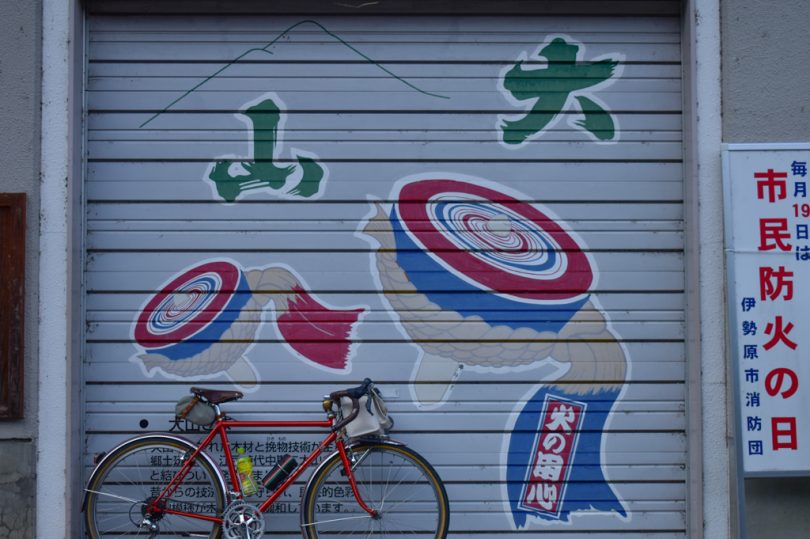
We left our bicycles by Isehara City municipal parking lot and headed for the approach on foot.
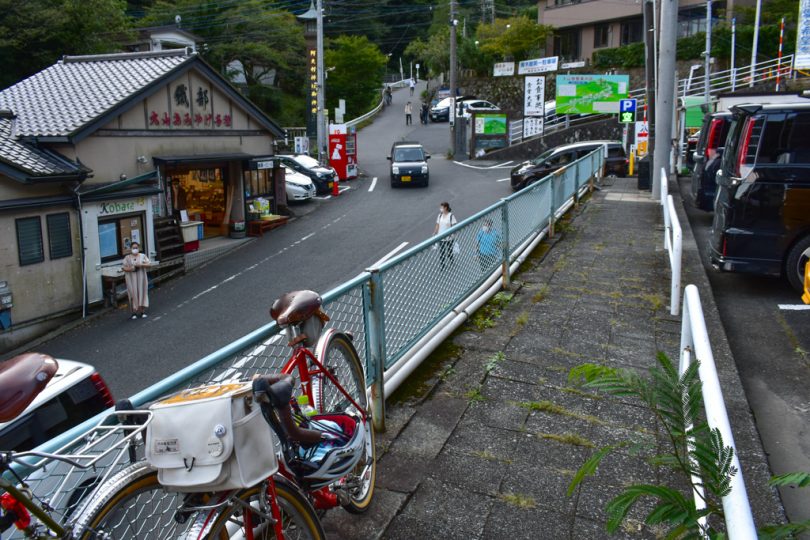
Koma-sando approach with a Showa-era atmosphere
Now all I have to do is take Oyama Cable Car to the shrine! But the path to the boarding area was longer than I had expected. It takes about 15minutes to climb the stairs. On the side of the stairs is a plaque that politely reads, “Koma-sando approach has 362 steps”.
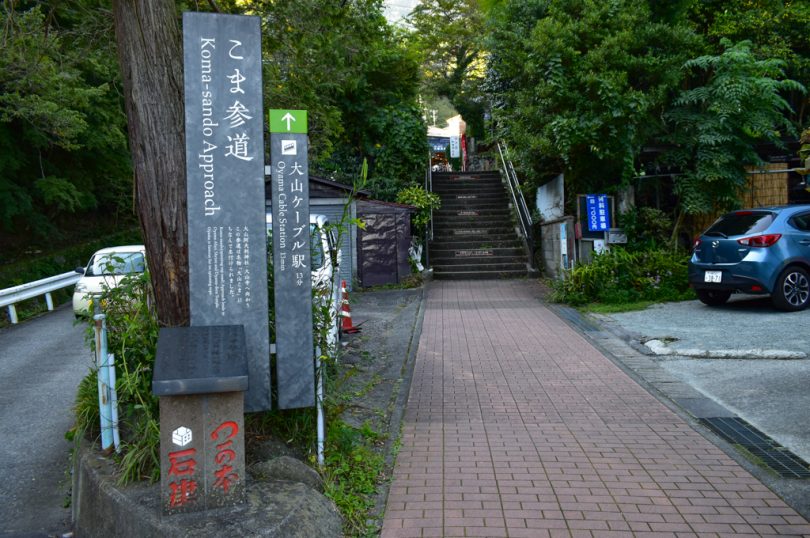
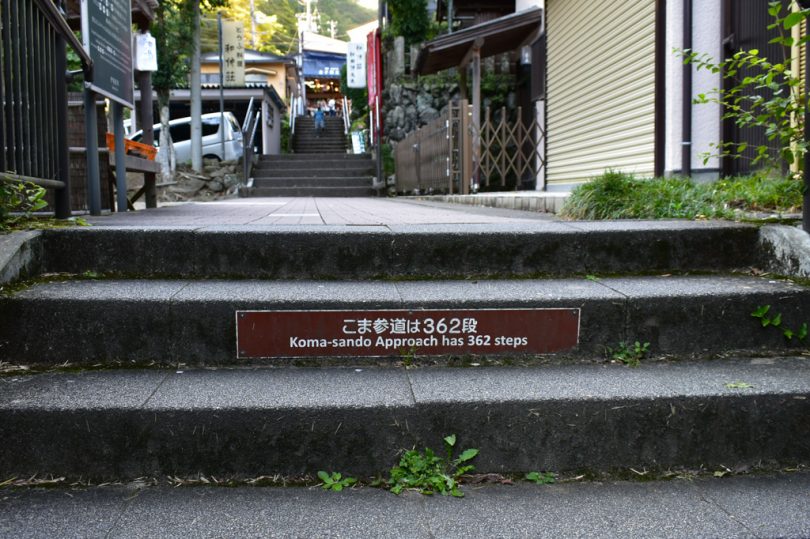
In the middle of such a long approach, the scenery of old-fashioned souvenir shops continues.
It is tempting to stop by after a tiring day.
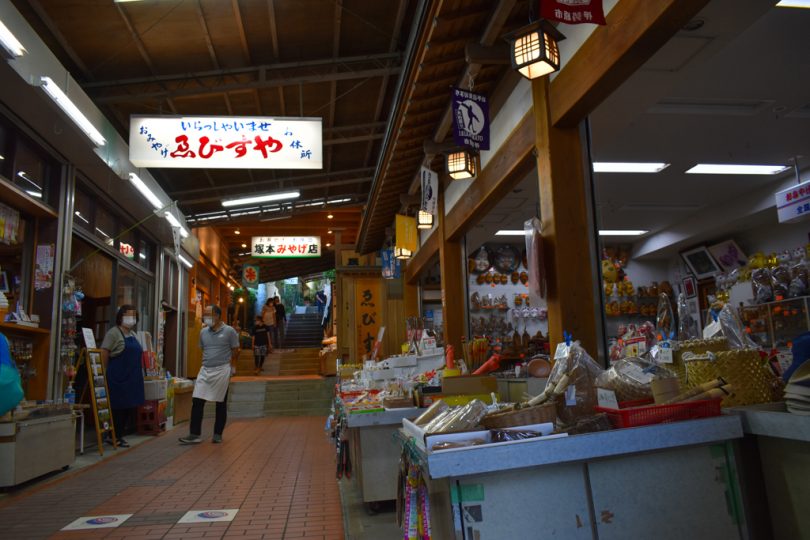
Finally, we arrived at Oyama Afuri Shrine
Finally, we arrived at the cable car stop. From here, the cable car stops at Oyama Station on the way to Afuri Shrine, which takes about 6minutes.
The road to this point was long.
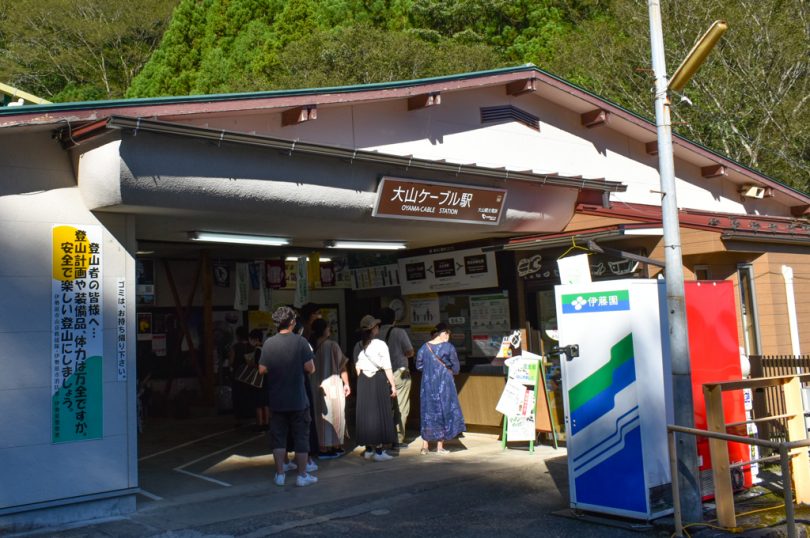

The lower shrine of Oyama Afuri Shrine is located at an elevation of 700m, and the head shrine is at the summit of the mountain. The cable car takes you to the lower shrine. To get to the head office, you need to have proper mountaineering gear.
After descending a gentle stone staircase, you will come to a plaza.
At the back of the plaza is a restaurant called “Chayadokoro Sakuraya,” which has become a hot topic on social networking sites.
It became famous after it became a buzz on social networking sites, even though it only looks like “Rumeso” with a “ramen” noodle notice hanging on the side. I wanted to see it once myself, so I was excited to see it in person.
It was interesting to see that they even sell goods such as “Rumeso key chains” at the store.

Praying at the lower shrine of Oyama Afuri Shrine
After climbing the last flight of stairs, I finally saw the lower shrine of Oyama Afuri Shrine.
“Oyama Pilgrimage”, popular in the Edo period (1603-1867), attracted as many as 200,000 worshippers a year. It is amazing that so many people visited the shrine in those days when there were no cars, trains, or even cable cars.
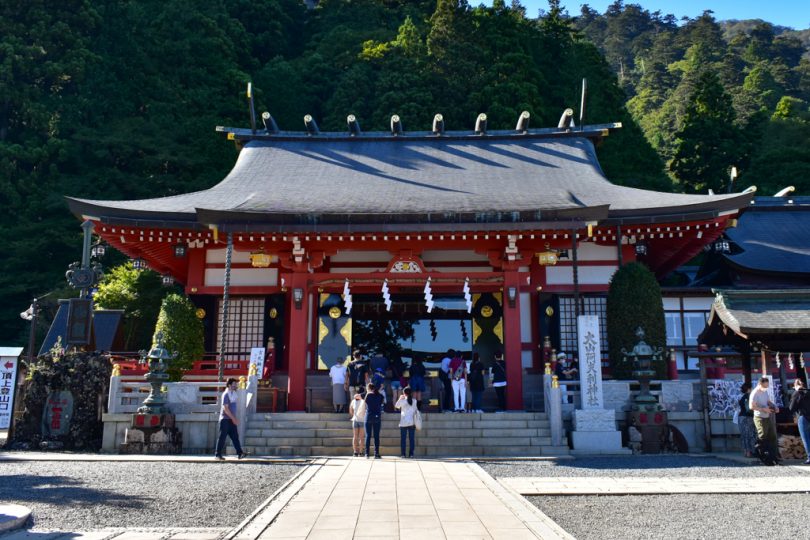
A view of Shimo-sha that will blow away your fatigue
The view from the torii of Shimo-sha shrine is spectacular, and on a clear day you can see Enoshima Island, Miura Peninsula, and Sagami Bay.
To be honest, I was exhausted after a lot of walking, but this view cheered me up.
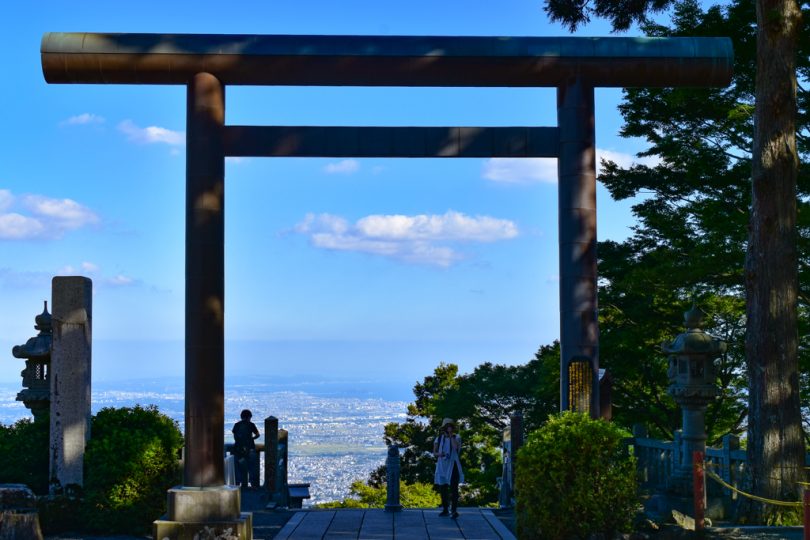
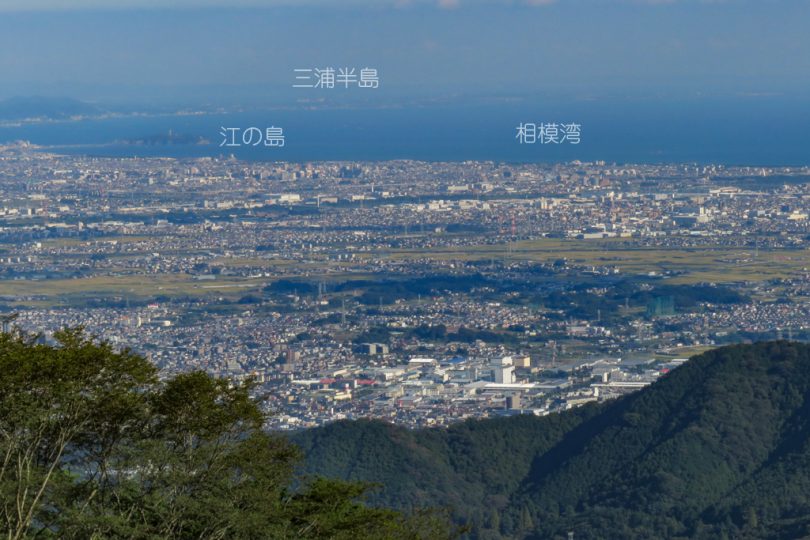
I was worried about my bicycle, so I decided to go back down the mountain. Of course, it is about a 15-minute walk back….
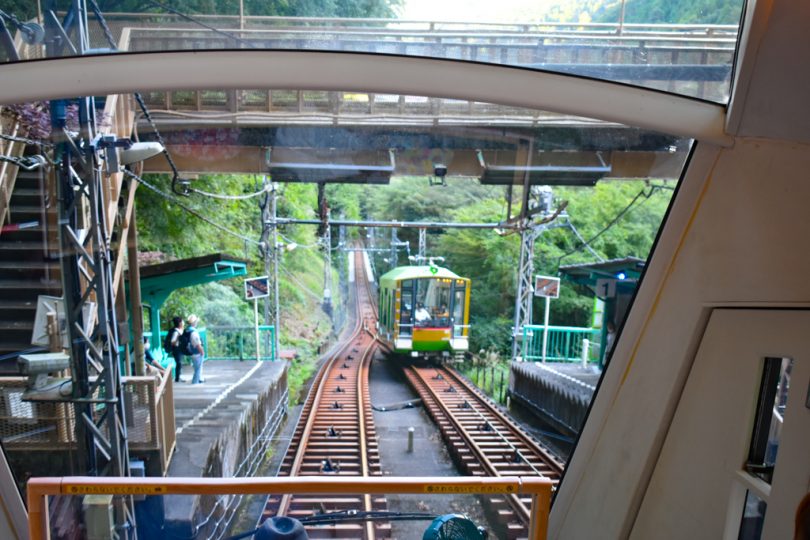
Cycling through the countryside to Hon-Atsugi Station
We are going down Prefectural Route611, which was hard on the way here. It is a very steep slope, so be careful not to drive too fast.
Cycle along the road you came from for a while and turn onto Prefectural Route64 on the way. You will see an open rice field on your right, which seems to be the site of the old battlefield of Sanemaki-bara. It is hard to believe that a battle took place in such a place, but there is a signboard explaining it.
Kamitsutsumi water mill hut standing alone creates a nice atmosphere.
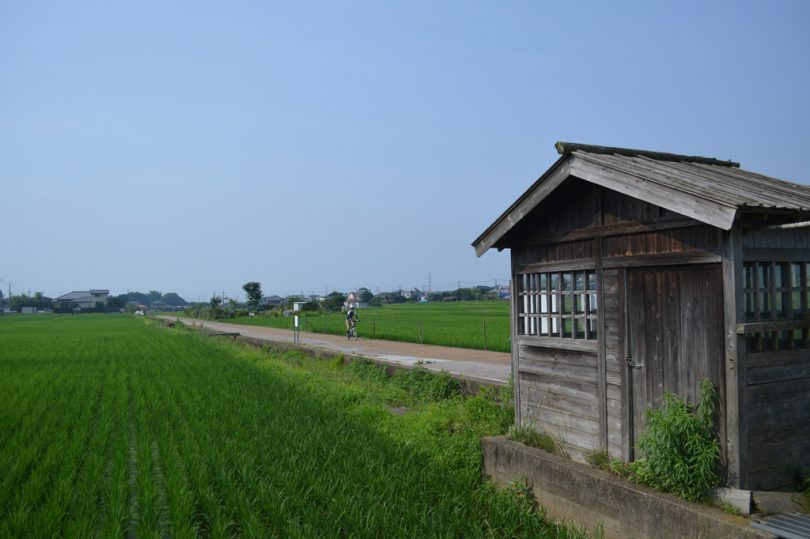
We ride along Tamagawa River, which we passed on the way here, and reached the goal at Hon-Atsugi Station after passing through the downtown area.
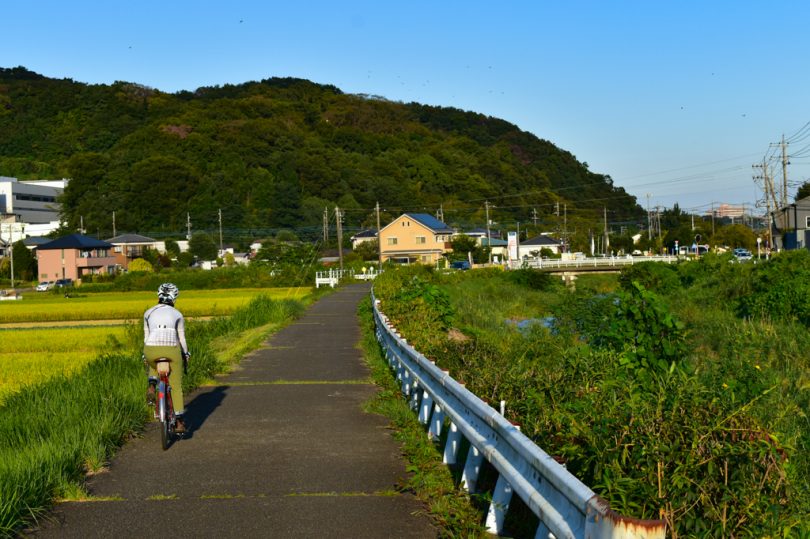
Course Introduction
▼Kanagawa Prefectural Nanasawa Forest Park
http://www.kanagawa-park.or.jp/nanasawa/
▼Oyama Afuri Shrine
https://trip.pref.kanagawa.jp/destination/oyama-afuri-shrine/173
▼Oyama Cable Car
https://www.odakyu.jp/english/sightseeing/tanzawa_oyama/
Access
Train: Take Odakyu Line express train from Shinjuku Station to Hon-Atsugi Station.
By Car: From Tokyo Interchange to “Atsugi Interchange on Tomei Expressway, about 30min. About 15min from Ken-O Atsugi Interchange on Ken-O Expressway.
Summary
We introduced routes to enjoy higanbana, a flower that reminds us of autumn.
The best time to see the flowers is around mid to late September, so we recommend that you check the blooming information before going out. Since you will be walking along the footpaths between rice fields and along the approach to the temple, it is better to wear comfortable shoes.



